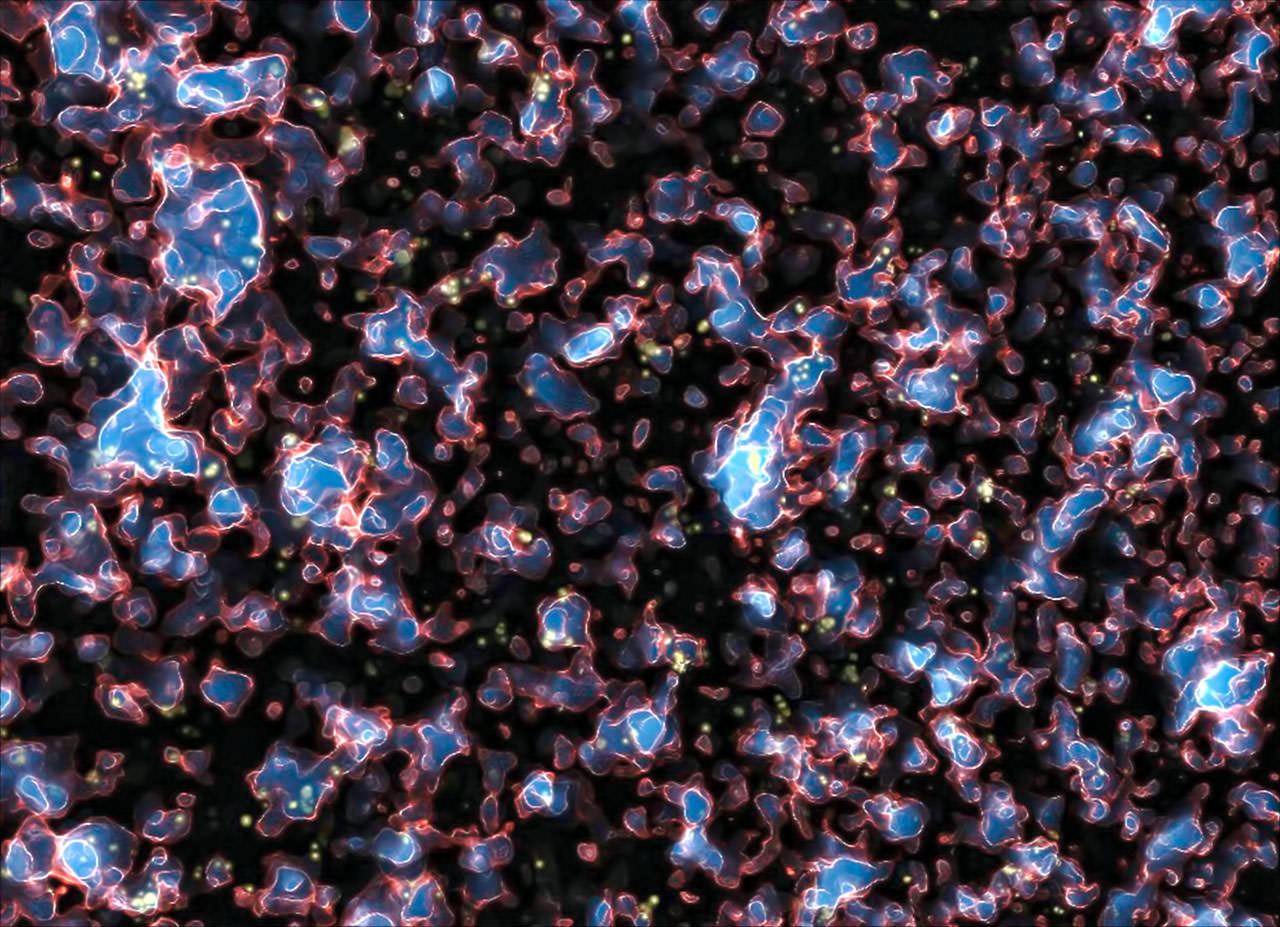The “Epoch of Reionization” was a critical period for cosmic evolution and has always fascinated and mystified astronomers. During this epoch, the first stars and galaxies formed and reionized the clouds of neutral hydrogen that permeated the Universe. This ended the Cosmic Dark Ages and led to the Universe becoming “transparent,” what astronomers refer to as “Cosmic Dawn.” According to our current cosmological models, reionization lasted from 380,000 to 1 billion years after the Big Bang. This is based on indirect evidence since astronomers have been unable to view the Epoch of Reionization directly.
Investigating this period was one of the main reasons for developing the James Webb Space Telescope (JWST), which can pierce the veil of the “dark ages” using its powerful infrared optics. However, observations provided by Webb revealed that far more galaxies existed in the early Universe than previously expected. According to a recent study, this suggests that reionization may have happened more rapidly and ended at least 350 million years earlier than our models predict. Once again, the ability to peer into the early Universe has produced tensions with prevailing cosmological theories.
The study was led by Julian B Muñoz, an assistant professor of astronomy at The University of Texas at Austin. He was joined by John Chisholm, also an assistant professor of astronomy at UT Austin; Jordan Mirocha, a NASA postdoctoral student at NASA’s Jet Propulsion Laboratory and the California Institute of Technology; Steven R Furlanetto, an associate professor of physics and astronomy at the University of California-Los Angeles, and Charlotte Mason, an associate professor with the Cosmic Dawn Center at the Niels Bohr Institute. The paper that describes their findings was published in the Monthly Notices of the Royal Astronomical Society.

According to current cosmological models, the Universe was filled with a hot, dense plasma of protons and electrons for the first 380,000 years after the Big Bang. Eventually, the Universe cooled enough for protons and electrons to come together and form neutral hydrogen. By ca. 100 million years after the Big Bang, the first stars (Population III) began to form, which were extremely massive and hot. These stars came together to create the first galaxies, and their ultraviolet light caused neutral hydrogen to once again split into protons and electrons (aka. became ionized).
Once most of the hydrogen in the Universe became ionized (ca. 1 billion years after the Big Bang), the Epoch of Reionization ended. At this point, the Universe was transparent, and light from this period is visible to optical telescopes today. As Chisholm indicated in a UT Austin news release, reionization also played a major role in how the Universe evolved. “The process heated and ionized gas in the Universe, which regulated how fast galaxies grew and evolved,” “These early stars established the overall structure of galaxies in the Universe.”
Before the deployment of the JWST, scientists relied on measurements of the Cosmic Microwave Background (CMB), the relic radiation from the Big Bang, and the Lyman-alpha Forest – the wavelength of light associated with hydrogen reionization. From this, astronomers have gained a sense of how much energy was available for reionization to occur (a “photon budget”) and how long it lasted. As Muñoz explained:
“[Reionization] is the last major change to happen. You went from neutral and cold and boring to ionized and hot. And this isn’t something that only happened to one or two galaxies. It happened to the whole Universe. It’s an accounting game. We know that all hydrogen was neutral before reionization. From there, you need enough extreme ultraviolet to split each atom. So, at the end of the day, you can do the math to figure out when reionization ended.”

However, observations made with the JWST have revealed things that challenge accepted models. This includes a greater abundance of galaxies, which produce more UV radiation than previously anticipated. These findings suggest that reionization should have ended 550 to 650 million years after the Big Bang rather than 1 billion years. But if this were true, the CMB and Lyman-alpha Forest would look different. In short, there is a tension between these measurements and Webb‘s observations – as the team describes in their study, a “photon budget crisis.”
Much like the Hubble Tension, these findings suggest something could be missing from our current cosmological models. One possibility that the team explored is recombination, where ionized protons and electrons come together again to form neutral hydrogen. This is precisely what happened 380,000 years after the Big Bang, known as the “Era of Recombination.” If this process happened more often than our models suggest, it could increase the amount of extreme-UV light needed to reionize the Universe. As Muñoz explained, follow-up observations are needed to confirm this theory:
“We need more detailed and deeper observations of galaxies, and a better understanding of the recombination process. Resolving this tension on reionization is a key step to finally understanding this pivotal period. I am excited to see what the coming years hold.”


“The biggest theoretical uncertainty is quantifying the recombination rate, which has a substantial effect on the
reionization history (see Fig. 3) and may alleviate the requirements on the sources.”